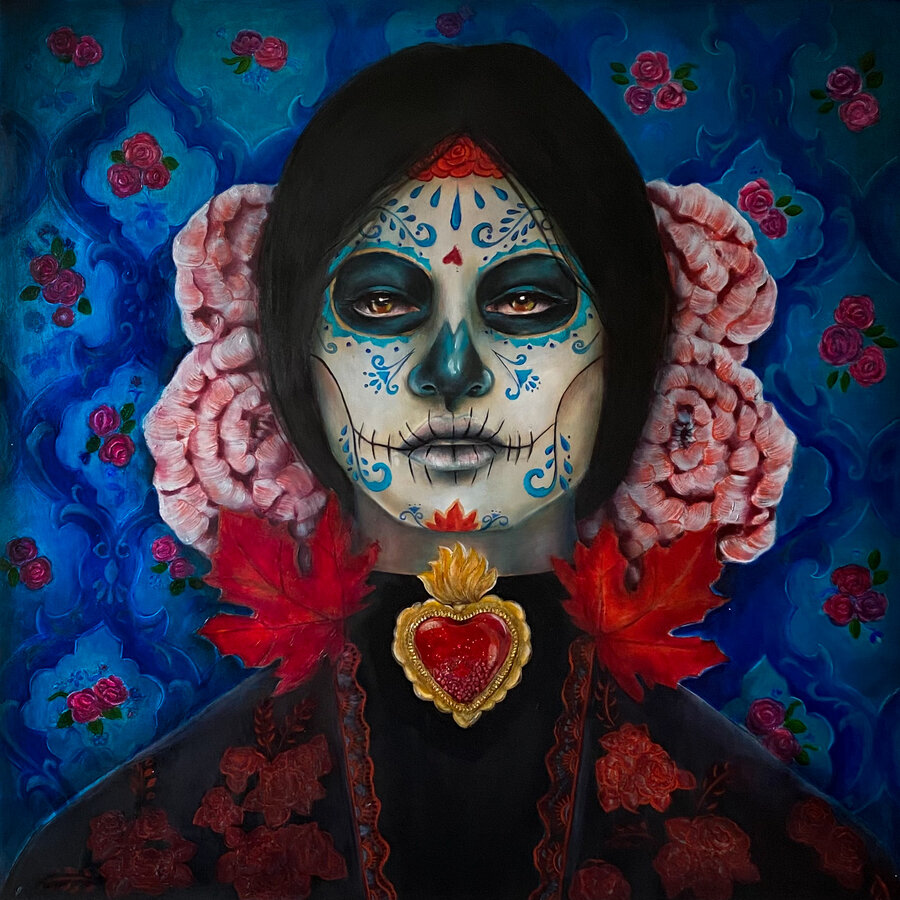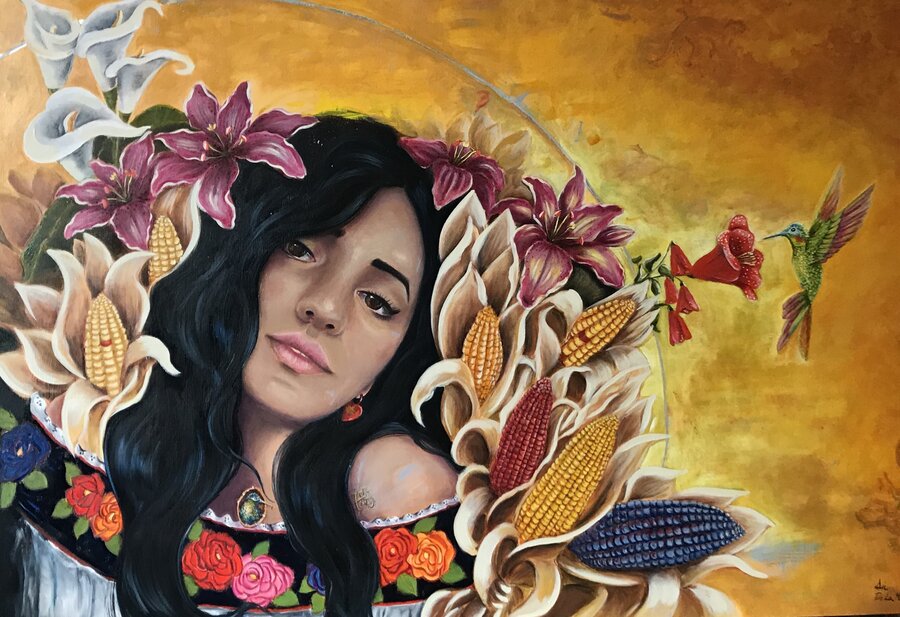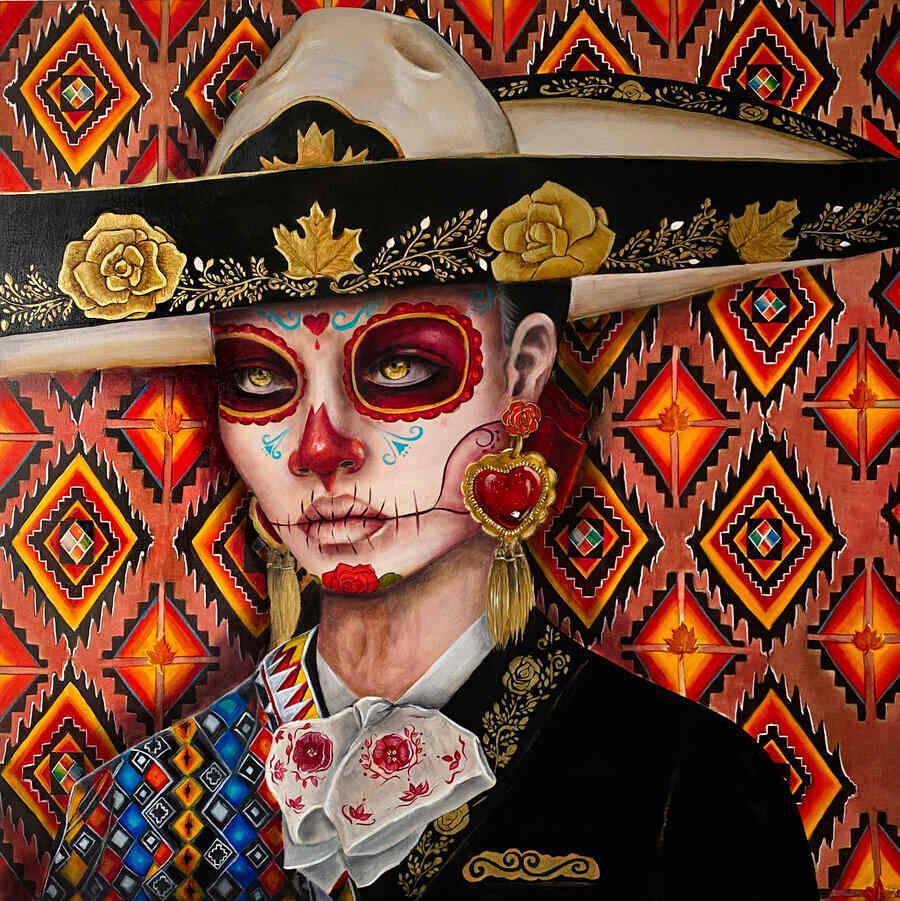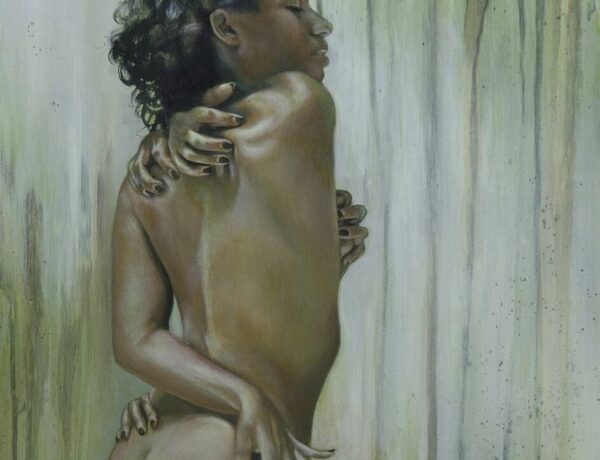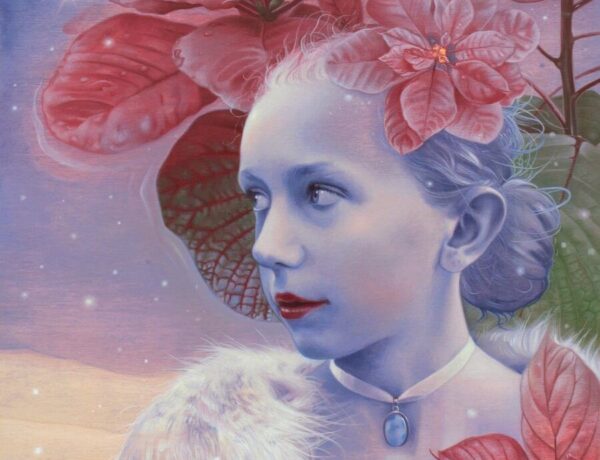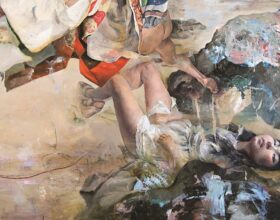Diversity and identity politics in the arts have been an increasingly highlighted discourse in the last years. And indeed, it is about time. Over centuries, the art world was dominated by narratives that represented a tiny, privileged group of the world’s population and, undoubtedly, we have not overcome this situation. The path of unlearning and (re-)learning, and acknowledging diverse realities, practices and experiences is a long one, and the process of decolonising and democratising the arts has just begun. Fortunately, we do witness and engage in an increasingly critical discourse about discrimination and inaccessibility in the past that challenge the present. Global protest movements and the labour of many inspiring people have impacted these circumstances and are initiating change and transformation. Surely, Ari De La Mora is one of these people. The painter and muralist is dedicated to creating representation and space for diversity and cultural heritage through people and their stories.
Her portraits, and mostly female subjects, claim a narrative that both informs Mexican traditions and culture and, at the same time, challenges stereotypes. Ari, born and raised in Mexico and currently living in Canada, explores through her paintings not only the stories of others but raises questions about her own identity as BIPOC residing in a predominantly white country and culture.
Throughout the history of art, we have seen mostly only one discourse of representation, especially when it comes to the female figure. However, on the bright side, in recent years, new spaces are opening up prioritizing inclusivity and presenting us with different cultural perceptions. We are seeing people in the arts that look, act or experience life, its struggles and challenges just like we do. This change makes a person feel included in society and reinforces a positive view and the belief of what they can achieve.
It is a challenging journey to find the confidence and courage to move away from the mainstream and find your own space, voice and ultimately appreciation. Ari felt the urge to highlight her culture once she left Mexico; her work became a strong connection to her roots while navigating a different society, surroundings and discrimination. Art has become Ari’s vessel to preserve and communicate her identity. The artist’s energy and resilience are an inspiring reminder that art holds great power and can become a fertile ground for raising a voice and claiming space.
Exclusive Interview with Ari De La Mora
Can you tell us a bit about yourself and your journey as an artist?
I am an immigrant who happens to have been in love with art since childhood. I was born and raised in Mexico and currently live in Canada. I am a self-taught painter, and probably without knowing it, I have been training my eye and mind since I was a child – paying close attention and memorizing the images, colours and shapes that caught my eye and/or sparked my imagination which I then captured in my sketchbooks. Now, my observation leans towards the human figure, especially the female portrait, since I am fascinated by the female gaze and the stories behind her eyes.
What inspired you to follow your creativity?
I believe that an artist is born with a sensitivity and a special curiosity that develops, mutates and changes throughout life; an artist sees the world with entirely different eyes. Although, I fell into the stereotype that art should only be considered a hobby at one stage in my life. It was until I left Mexico that, out of necessity, art became my most constant way of navigating through life, of communicating and empathizing with others, making art became my lifestyle. I decided to make a career doing what I love the most and what I am best at.
What is art for you? A tool? A form of communication? Is it enough for you if art is only pleasing to the eye?
Both a tool would be my painting technique, the materials I use, the constant experimentation and study of different supports, art supplies, the knowledge of colour theory, composition, symbolism and even cultural anthropology; what material will I use that would give me the desired effect, what cultural symbols or elements will I resort to being able to communicate the message or emotion that I am looking for in the painting?
I understand that there are audiences for all types of art. Still, personally, I believe that art should be able to communicate a message, provoke a reaction within the viewer, and be the vehicle to generate conversations and for others to connect with it. Art can be aesthetic and challenging at the same time.
Art has the power of exposure to different proposals, lifestyles and cultures.
How are art and representation connected?
Representation matters greatly! You cannot admire what you can’t see. Throughout the history of art, we have seen, mostly, only one discourse of representation, especially when it comes to the female figure. However, on the bright side, in recent years, new spaces are opening up prioritizing inclusivity and presenting us with different cultural perceptions. We are seeing people in the arts that look, act or experience life, its struggles and challenges just like we do. This change makes a person feel included in society and reinforces a positive view and the belief of what they can achieve.
How do you choose your subjects?
It usually starts with an initial idea that flashes into my head, as a result of something that touched me deeply or intrigued my creativity. This can come from my life experiences or cultural anthropology issues. For example, I find so much beauty in the ancient traditional customs of my home country. I then develop an initial set of sketches and seek out for models to photograph whose facial features align with the idea I’m looking to represent.
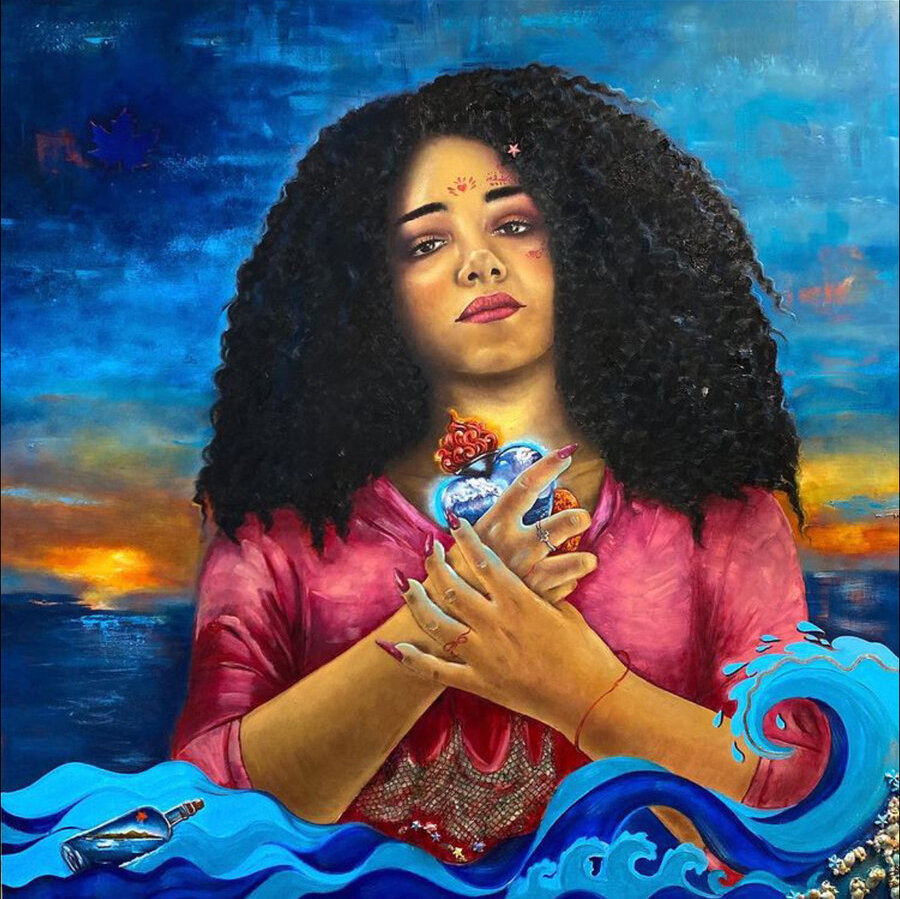

We witness a multifaceted discourse globally around identity politics. How do you think art can add to these conversations?
I would say that the goal is to normalise diversity. Art has the power of exposure to different proposals, lifestyles and cultures. I think the great thing is that art makes us feel connected in a world that constantly keeps pushing the discourse that we are not equal.
Do you work in a collective and collaborate with other artists who share a similar approach and mindset? How does it impact your work?
Although I usually work on my own, I have had the opportunity to collaborate with other Latin American, Canadian, and European artists…not necessarily painters but from various disciplines, with whom I share a passion for the arts and a similar approach in terms of a sincere appreciation and respect for cultures and life experiences of other people. This develops a sense of community and helps to open up more opportunities in the art field as a collective.
When a majority group takes cultural or identity elements from other minority groups for the primary purpose of marketing or a personal agenda, it reinforces stereotypes and implicit bias.
Do you see any difficulties, inequalities, and problems in the art field? What would you like to change?
There is a problem when there is just one narrative, one way of making art, one perspective of beauty and what is considered valuable, usually by the same group of people making the decisions in the art field. When a majority group takes cultural or identity elements from other minority groups for the primary purpose of marketing or a personal agenda, it reinforces stereotypes and implicit bias. It is a challenge, in my opinion quite necessary, to achieve diversity in representation because it involves change and an open mind.
I would like to see more spaces and initiatives for multiculturalism in the arts and for female representation with a focus on preserving culture and social equality.


